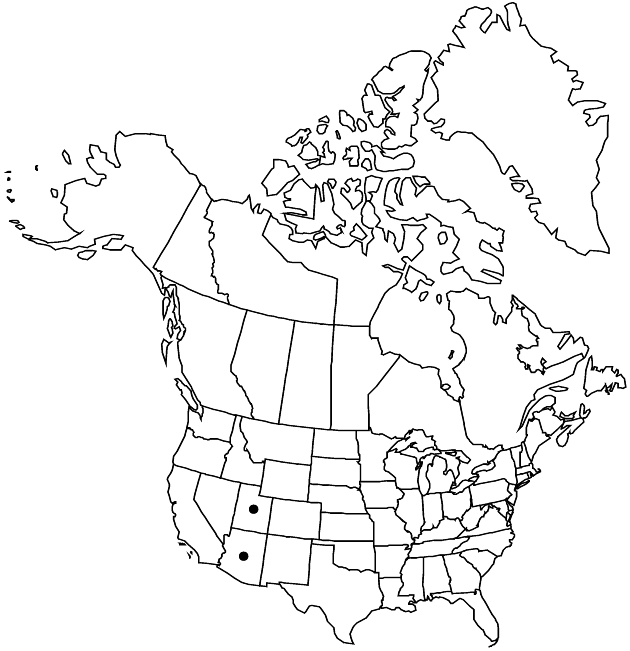Chrysothamnus scopulorum
Sida 21: 1626. 2005.
Shrubs, 30–100 cm; with woody, ± wandlike, branched caudices, bark tan to gray, fairly smooth, flaky with age. Stems ascending, green, becoming tan, glabrous or puberulent. Leaves ascending to spreading; sessile; blades usually 5-nerved, linear to narrowly elliptic or lanceolate, 7–80 × 1–12 mm, flat, margins often ciliolate, apices attenuate to spinulose, faces glabrous or scabrellous. Heads in usually cymiform to corymbiform, rarely racemiform arrays, not overtopped by distal leaves. Involucres obconic to subcylindric, 6.5–12 × 3–5 mm. Phyllaries 50–60+ in 5–6 (–7) series, ± in spirals, tan, midnerves greenish to brown, raised, ± expanded apically, oblong to elliptic, 1–8.5 × 1–2 mm, unequal, mostly chartaceous, apices acute to rounded, erect, ± thickened, faces glabrous, not resinous. Disc-florets 10–16 (–20); corollas 5.5–8 mm, lobes 1.5–2.3 mm; style-branches 2.8–3.7 mm, appendages 1.4–1.9 mm. Cypselae reddish-brown, cylindric, 4–6 mm, ± 4-angled, faces hairy; pappi tan, 6–7.5 mm. 2n = 18 (as Haplopappus scopulorum).
Phenology: Flowering late summer–fall.
Habitat: Brushy mountain slopes, ponderosa pine communities
Elevation: 1200–2200 m
Discussion
Selected References
None.
